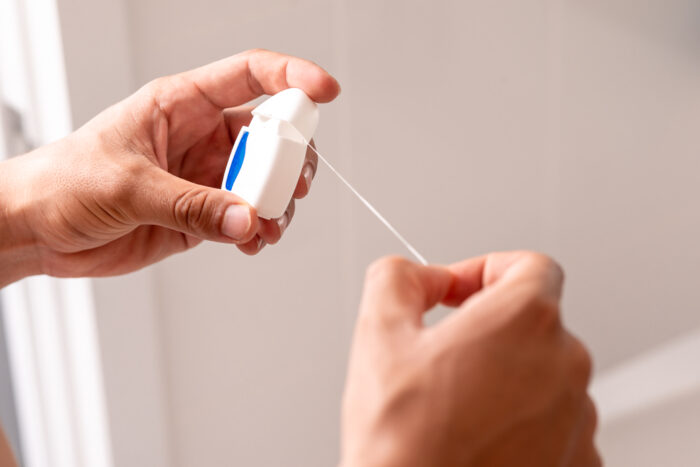Why Teeth Flossing Is Just as Important as Brushing
We all know we’re supposed to brush our teeth twice a day, right? It’s a habit most of us have down. But when it comes to flossing, that little string seems to get forgotten more often than not. Here’s the truth: teeth flossing is just as important as brushing, and your gums will thank you for not skipping it.
Let’s talk about why flossing matters, how to do it properly, and how it helps prevent more than just food stuck between your teeth.
Flossing Does What Brushing Can’t
Brushing your teeth is great. It removes plaque from the surfaces of your teeth, freshens your breath, and keeps your smile bright. But your toothbrush can’t reach all the tiny spaces between your teeth or along the gum line where plaque and food particles love to hide.
That’s where dental floss steps in. When you floss, you’re cleaning between your teeth, the tight little spaces where your toothbrush bristles just can’t get. It’s the only way to really remove plaque and food from those hard-to-reach spots.
In fact, the Canadian Dental Association recommends brushing and flossing every day to prevent tooth decay and gum disease. Think of brushing and flossing as a team. One without the other just doesn’t get the job done.
What Happens If You Skip Flossing?
Skipping flossing might not seem like a big deal, but over time, plaque starts to build up between your teeth. If left there, it hardens into tartar, which only your dentist or dental hygienist can remove.
Plaque buildup leads to cavities and gum disease. Your gums can become inflamed, bleed when you brush, or even recede over time. That’s not just uncomfortable, it can also lead to more serious dental issues (and bigger dental bills).
Flossing daily is one of the best ways of preventing tooth decay and keeping your mouth healthy between dental visits.
How to Floss Like a Pro
If flossing feels awkward or tricky, you’re not alone. But with a little practice, it gets easier. Here’s a simple breakdown to get you started:
- Start with about 18 inches of floss. Wrap most of it around one of your middle fingers, and a little around the other.
- Use your index fingers and thumbs to gently guide the floss between your teeth.
- Move the floss up and down along each side of the tooth, going just below the gum line. Curve it slightly into a “C” shape for the best clean.
- Use a clean section of floss as you go from tooth to tooth.
- Toss the floss when you’re done, never reuse it!
Bonus tip: If you’re someone who struggles with traditional floss, consider a water flosser. It uses a small stream of water to remove plaque and debris, and it can be especially helpful for people with braces or sensitive gums.

Not Just About Food Stuck in Your Teeth
A lot of people only floss when they feel something stuck between their teeth. While it’s satisfying to get that out, flossing is about way more than just clearing food. It’s about removing plaque before it causes problems.
Plaque is sneaky. Even when your teeth feel clean, bacteria may be building up between them. Daily flossing breaks up that biofilm and helps prevent inflammation, cavities, and bad breath.
Flossing = Self-Care
Think of dental care like skincare for your smile. Brushing and flossing are the daily habits that keep things clean, healthy, and looking good. Sure, it takes an extra minute or two, but your mouth will thank you.
Plus, your dentist or dental hygienist will notice the difference. Seriously, we can tell. Nothing makes us happier than seeing healthy gums and a patient who’s clearly been flossing.
So, Which Floss Should You Use?
There are a lot of dental floss options out there: waxed, unwaxed, mint-flavoured, tape-style, eco-friendly… the list goes on. The best floss is the one you’ll actually use. Pick something you like and stick with it.
Some people find traditional floss too difficult, so they switch to pre-threaded flossers or a water flosser. That’s totally fine. The most important thing is to do it every day.
Make Flossing a Habit (Not a Hassle)
If flossing feels like a chore, try these tips to make it part of your routine:
- Keep floss somewhere you can see it (not buried in a drawer)
- Floss while watching TV or listening to a podcast
- Set a daily reminder on your phone
- Reward yourself for building the habit
A Minute a Day Makes a Big Difference
Teeth flossing doesn’t take long, but the benefits last a lifetime. By adding flossing to your daily routine, you’re doing more than just cleaning between your teeth. You’re taking an important step toward protecting your gums, avoiding cavities, and keeping your smile healthy and strong.
If it’s been a while since your last dental checkup, we’d love to see you. Our friendly team at Advanced Dental is here to help you keep your teeth in great condition. Contact us today to book an appointment!
